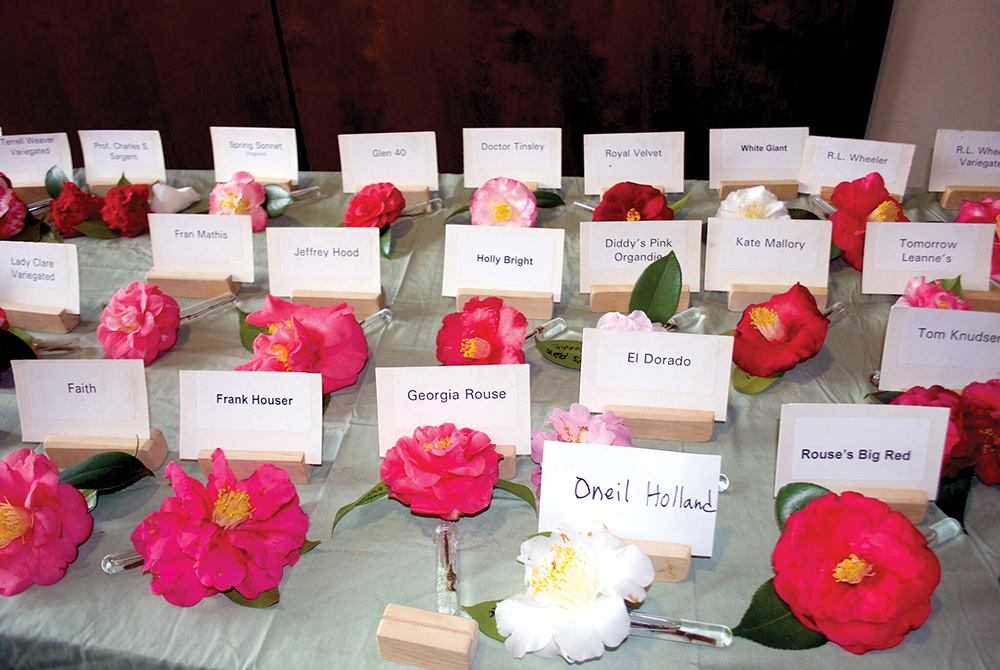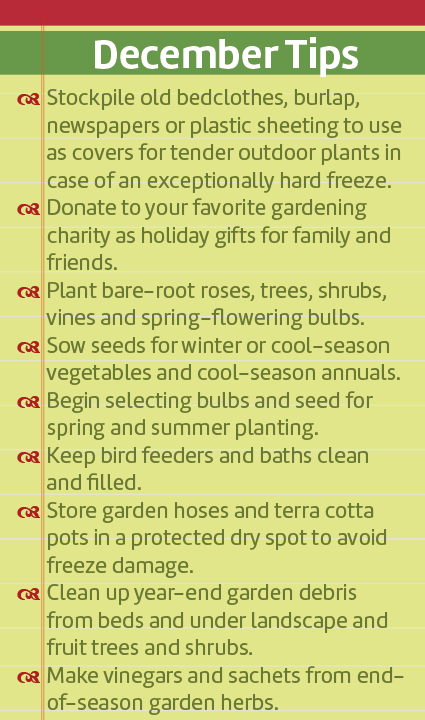
Winter officially arrives this month, which may make some gardeners feel a little sad. But for a group of east-central Alabama gentlemen, this is a month of great gardening joy. That’s because this is high season for the “rose of winter” — more commonly known as the camellia.
Camellias have been adored by Southern gardeners for many generations, primarily because of their gorgeous winter blooms. They’ve also been adored for nearly six decades by members of the Auburn-Opelika Men’s Camellia Club, an all-male gardening group that strives to share camellia knowledge, plant material and fellowship with one another and with the gardening public.
Chartered in 1959, the club began when a group of primarily Auburn University agriculturists started gathering monthly to share and learn all they could about camellias (and other plants and gardening subjects). Since then, the club’s roster has included many accomplished professional and self-taught plantsmen and, while the last of those founding members (venerable gardener Tom Corley) passed away earlier this year, the club still has many exceptional experts in its ranks.
Among those experts is Charles Mitchell, who first learned about the club when he was a student at Auburn. “I thought it odd, but delightful, that a group of ag professors, most of whom grew up on a farm, would form an all-men’s camellia club,” he said. But, since becoming a member in the mid 1980s, Mitchell has seen firsthand the club’s value to its members and to the local community.
“Our club grew out of the love of gardening, the love of camellias and the joy of sharing with others,” he said, all things the members of this good old gardening boys club still focus on today.
Another of the club’s experts is Ken Rogers, who also first learned of the club when he was an Auburn student and became a full-fledged member around the same time as Mitchell. In the years since, Rogers has become a skilled camellia grower and grafter (among his many gardening talents) and he’s never lost his fascination with these plants.
 Easy to grow
Easy to grow
“They are tough plants and easy to grow,” said Rogers. But for him, the main reason to love camellias is because of their “beautiful, diverse blooms at a time of year when nothing else is blooming in the landscape.”
Depending on the species (Camellia japonica and Camellia sasanqua are the two most common species planted in Alabama), camellias may begin blooming as early as September and bloom times can last as late as April or early May. But camellias are typically at their best from November through March when they produce prolific numbers of flowers that, depending on the cultivar, come in a wide range of colors (white, pink, red, salmon and variegated among them), sizes (from ½ to 5 inches in diameter) and forms (single- and double-petal arrangements as well as peony, anemone and rose styles).
Though the A-O Club membership (which numbers about 32 men —novices and experts alike — and is welcoming new guys to their ranks) is limited to menfolk, these guys truly want to share their love — and knowledge — of camellias with everyone. To that end, they hold an annual camellia show (usually in late February or early March), have established a number of public camellia gardens and plantings in the area, host public workshops to teach camellia pruning and propagation techniques and its members are available to speak to other garden clubs and civic groups.
For those who don’t fit the gender qualifications or who live in other parts of the state, there are several co-ed camellia clubs. Find out more on the “Alabama Camellias” Facebook page or the American Camellia Society’s website at www.americancamellias.com. And for more information on the A-O

Men’s Camellia Club’s events and educational opportunities, contact Rogers at [email protected] or Mitchell at [email protected].
Camellia Facts
Camellia japonica L was designated as Alabama’s state flower in 1959, the same year that the Auburn-Opelika Men’s Camellia Club was chartered. Both will celebrate their 60th anniversary in 2019 in conjunction with Alabama’s Bicentennial celebration of 200 years of statehood.
Some 20,000 known cultivars of camellias exist in the world, several hundred of which can be grown outdoors in much of Alabama.
Because they are tropical plants and cannot tolerate prolonged cold temperatures, camellias are best suited as landscape plants in the Deep South, though more cold-tolerant cultivars are now available for those living in more northern parts of the state.
Camellias grow well in containers, making them great houseplants and allowing them to be moved in and out during the year as temperatures fluctuate.
Camellias require an acid soil and do best in partial shade. They have few pests and diseases and require minimal maintenance.
To learn more about growing camellias in Alabama, check out the Alabama Cooperative Extension System publication The Culture of Camellias: Alabama’s State Flower (www.aces.edu/pubs/docs/A/ANR-0202/ANR-0202.pdf).
Katie Jackson is a freelance writer and editor based in Opelika, Alabama. Contact her at [email protected].




